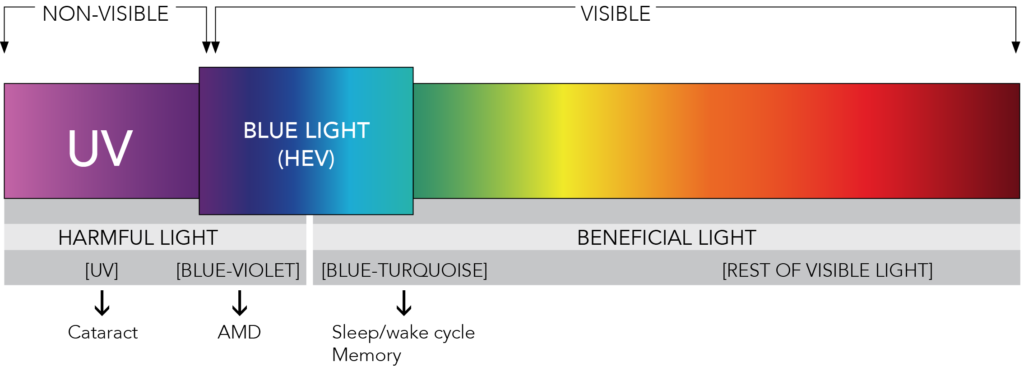Circadian Rhythm
The Truth About Blue Light: It’s Not All Bad

Article at a Glance:
- Blue light has gotten a lot of negative press over concerns about circadian rhythm disruption and adverse health implications.
- In reality, not all blue light is bad; we have a paradoxical relationship with blue light that is more complex.
- Some blue light during the daytime is good for you because it helps regulate the body’s natural sleep/wake cycle. But too much blue light at night can disrupt your sleep and have compounding health consequences.
- Not all blue light is created equal. Blue-violet light is considered more harmful whereas blue turquoise is healthy blue light that your mind and body need to feel and function at their best.
When you hear the phrase “blue light”, what do you think of? Screen time? Circadian rhythms? The sun? Blue light is everywhere, and despite the negative attention it has earned in the media, the truth is that it’s not all bad for you. Resounding research has shown that visible light is much more complex than labeling it as “good or “bad”, and the effects of blue light on human health are somewhat paradoxical.

The Blue Light Paradox
Light exposure is one of our basic needs. Blue light is especially important during the daytime because it stimulates the brain more than other light – boosting energy, elevating mood and regulating circadian rhythms.(1) But too much light at the wrong time can be harmful, especially at nighttime when the body needs darkness to produce melatonin and sleep.(2)

Not All Blue Light is Bad
The blue light spectrum can be broken down into two different groups: blue-violet and blue-turquoise wavelengths. The blue-violet wavelengths below 460nm are shorter and defined as the “blue light hazard (BLH) zone”, aka junk light, because they can potentially cause damage to the retinal tissues of the eye over time. Longer wavelengths of blue-turquoise light (especially near 490nm) are critical because they stimulate circadian responses. This is also known as the “sky-blue” region.
Benefits of Exposure to Sky-Blue Light During the Day:
- boosts alertness(3)
- can help improve memory and cognitive function(4)
- can improve focus, productivity and reaction times(5)
- elevates mood(6)
The key point to remember is that humans are biologically programmed to follow light/dark cycles in order to entrain hormone production and bodily functions. So, exposure to blue light — specifically sky-blue wavelengths — during the daytime is not only healthy for you, it’s critical for regulating your circadian system and helping you function your best. At nighttime, be sure to minimize light exposure all together; this signals to the brain that the sun has descended below the horizon and it is time for the body to wind down for a good night’s sleep.
References
- https://www.ncbi.nlm.nih.gov/pmc/articles/PMC4989256/
- https://wexnermedical.osu.edu/blog/blue-light-and-vision
- https://brighamhealthhub.org/healthy-living/blue-light-boosts-daytime-performance
- https://www.researchgate.net/publication/6556740_Blue_light_improves_cognitive_performance
- https://www.lrc.rpi.edu/programs/lightHealth/LightAlertness.asp
- https://www.ncbi.nlm.nih.gov/pmc/articles/PMC2831986/
- https://pubmed.ncbi.nlm.nih.gov/30311830/


Pingback: SAD lights, PBM & Circadian Light: What You Need to Know - Shop TrueLight
Pingback: The Best Bulbs for Better Sleep - Shop TrueLight
Pingback: How to Get Your Light Right While Spending More Time at Home - Shop TrueLight